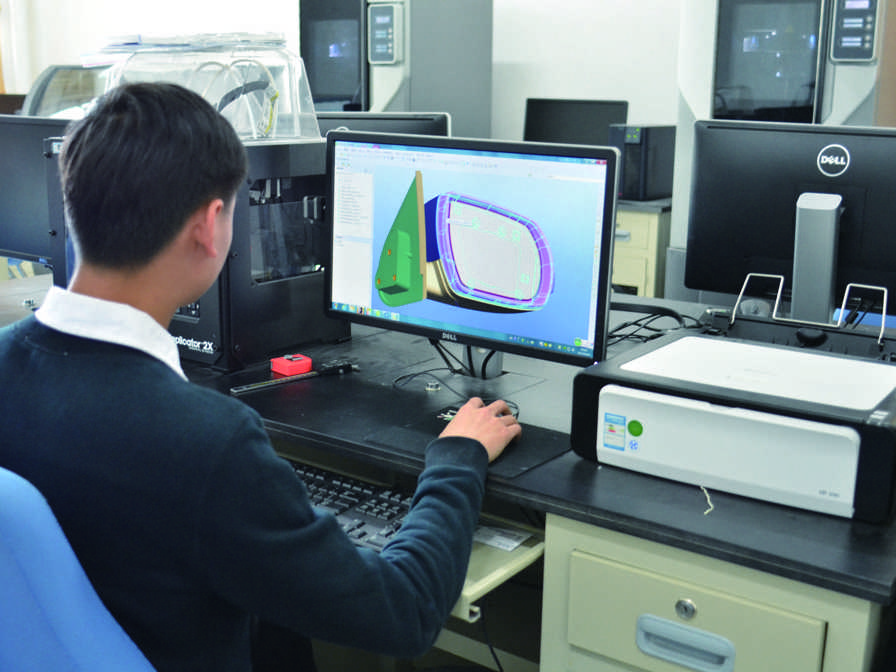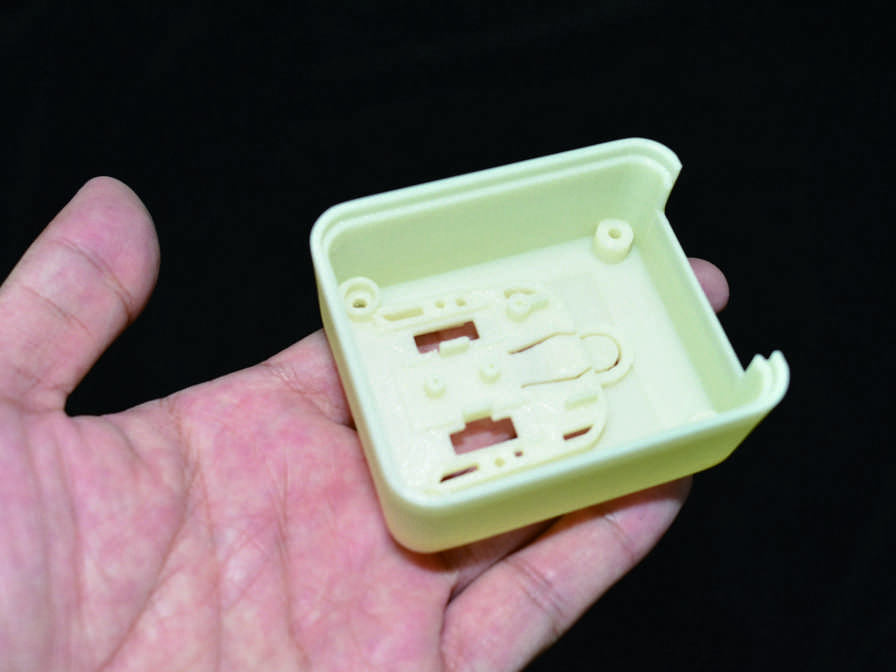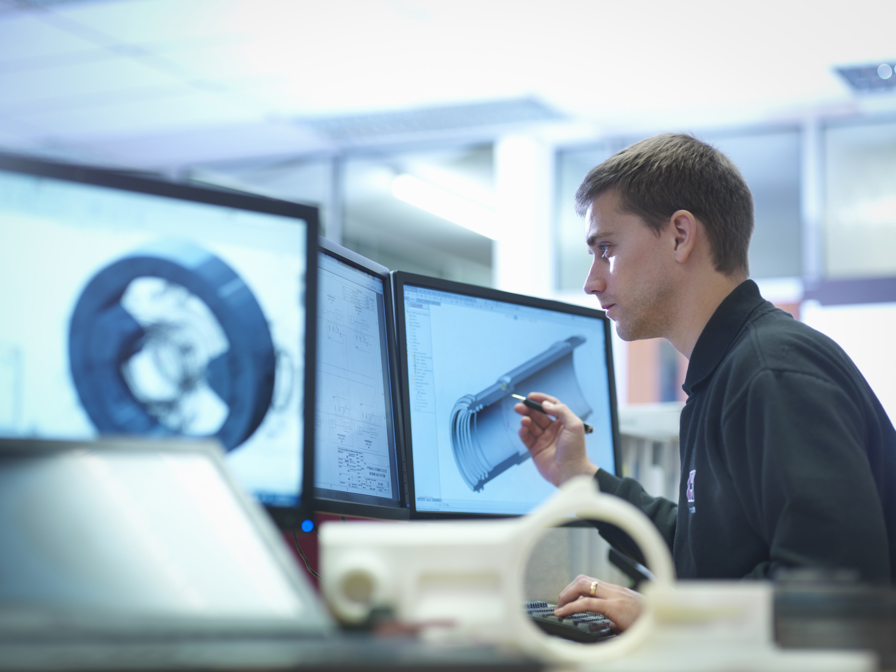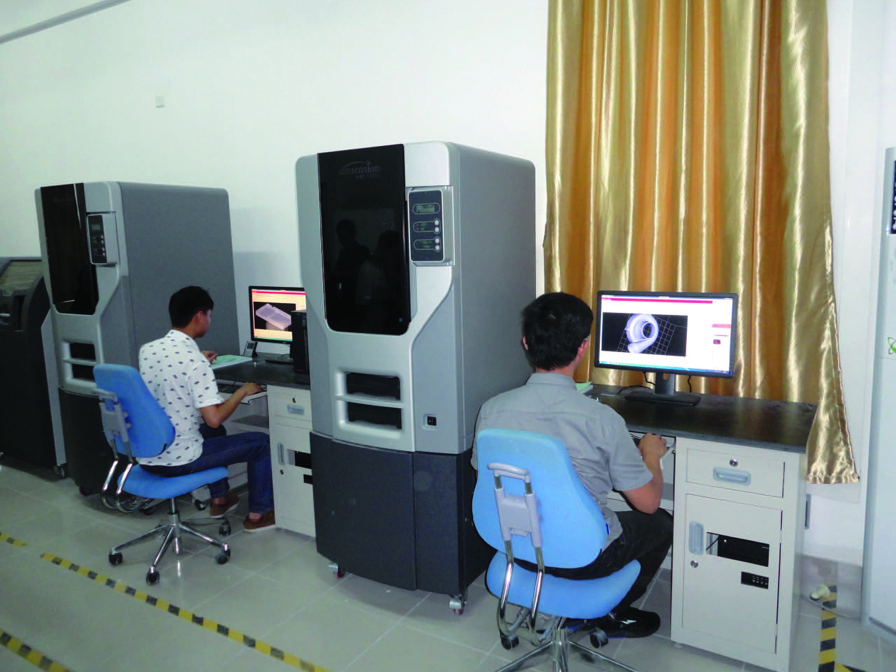3D 프린터는 교육과 학습 측면에서 이점을 제공했을 뿐 아니라 대학과 지역 기업 간의 협업의 기회도 마련했습니다. SDPI는 현지 자동차 제조업체의 백미러 프로토타입을 포함하여 여러 회사에서 디자인 검증을 위해 3D 프린팅한 프로토타입을 제작하는 과정을 지원하고 있습니다. 또한 SDPI에서는 3D 프린터를 활용하여 회로 기판 커버, 포장 용기, 소형 툴, 창의적인 공예품 등 다양한 모델을 제작했습니다.
2~3일의 생산 기간이 필요했던 기존의 모델 제작 방식에 비해 동일한 테스트용 모델을 3D로 프린팅하는 데 6~7시간밖에 걸리지 않으므로 기업은 제품 개발 주기를 앞당기고 연구개발 역량을 집중할 수 있습니다. 지난 몇 년간 중국에서 스마트 제조와 풀뿌리 혁신에 대한 인식이 높아지고 정부에서도 이를 크게 강조하는 가운데 Xu는 3D 프린팅의 도입이 제조 역량을 극대화하고 운영 워크플로를 최적화하기 위한 불가피한 추세가 되었다고 믿습니다.
Xu는 “3D 프린팅은 이미 우리의 삶을 보이지 않는 곳에서 조금씩 변화시키면서 변화의 중심이 되고 있습니다. 차세대 엔지니어가 조기에 혁신적인 기술을 접하게 되면 졸업 후 선택하는 기업이나 산업뿐만 아니라 미래의 학생들에게도 도움이 될 것입니다”라고 말합니다.
3D 프린터는 교육과 학습 측면에서 이점을 제공했을 뿐 아니라 대학과 지역 기업 간의 협업의 기회도 마련했습니다. SDPI는 현지 자동차 제조업체의 백미러 프로토타입을 포함하여 여러 회사에서 디자인 검증을 위해 3D 프린팅한 프로토타입을 제작하는 과정을 지원하고 있습니다. 또한 SDPI에서는 3D 프린터를 활용하여 회로 기판 커버, 포장 용기, 소형 툴, 창의적인 공예품 등 다양한 모델을 제작했습니다.
2~3일의 생산 기간이 필요했던 기존의 모델 제작 방식에 비해 동일한 테스트용 모델을 3D로 프린팅하는 데 6~7시간밖에 걸리지 않으므로 기업은 제품 개발 주기를 앞당기고 연구개발 역량을 집중할 수 있습니다. 지난 몇 년간 중국에서 스마트 제조와 풀뿌리 혁신에 대한 인식이 높아지고 정부에서도 이를 크게 강조하는 가운데 Xu는 3D 프린팅의 도입이 제조 역량을 극대화하고 운영 워크플로를 최적화하기 위한 불가피한 추세가 되었다고 믿습니다.
Xu는 “3D 프린팅은 이미 우리의 삶을 보이지 않는 곳에서 조금씩 변화시키면서 변화의 중심이 되고 있습니다. 차세대 엔지니어가 조기에 혁신적인 기술을 접하게 되면 졸업 후 선택하는 기업이나 산업뿐만 아니라 미래의 학생들에게도 도움이 될 것입니다”라고 말합니다.
Beyond the benefits of teaching and learning, the 3D printers have bridged business collaborations between the institute and local enterprises. SDPI has helped several companies produce 3D printed prototypes for design validation, including a rearview mirror prototype for a local automotive manufacturer. SDPI also used 3D printers to create different models, including circuit board covers, packaging containers, small tools, and creative crafts.
Compared to the traditional model-making methods that required two to three days’ production time, it took only six to seven hours to 3D print the same model for tests, helping companies accelerate product development cycle and focus R&D capabilities. With growing awareness and the government’s strong emphasis on smart manufacturing and grassroots innovation in China over the past few years, Xu believes that adoption of 3D printing has become the inevitable trend to maximize manufacturing capabilities and optimize operation workflow.
“3D printing is already changing our lives gradually behind the scenes and moving up onto the stage,” said Xu. “Putting the next generation of engineers in touch with the innovative technology in their early years will benefit students in their future endeavors as well as the companies or industries that they opt for once they leave school."
Following rounds of research and comparison between various 3D printing technologies and systems, SDPI installed two Stratasys FDM 3D Printers to meet its teaching needs and growing demand for business services. Since installing the 3D printers, SDPI has started specialized modules in model designs and professional manufacturing to focus on 3D printing applications in different fields of engineering studies, such as theory, robotics structure, and computer-aided manufacturing. These modules provide students hands-on experience operating 3D printers, while the models help them better understand abstract ideas.
Under professional guidance, SDPI students can quickly transform ideas into physical models and carryout design tests. For example, a group of mechanical engineering students were asked to design their own engineering components for a robotics project. Using the 3D printers, the students performed assembly, snap-fit and ergonomic tests. Design errors were easily identified and quickly adjusted and the final design was ready within days instead of weeks.



